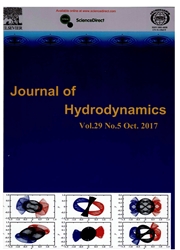

 中文摘要:
中文摘要:
因为它的潜力, supercavitation 为高速度的车辆调遣吸引了成长兴趣并且拖减小。为了更好在 supercavitating 理解水蒸汽混合物的反向的流动特征,流动在一只水翼船附近,数字模拟用一个统一 supercavitation 模型被进行,它联合一个修改 RNG 骚乱模型和成穴一个。由比较相关试验性的结果,水蒸汽混合的反向的运动在所有 supercavitation 阶段在成穴区域被发现。反的压力坡度在洞导致反向的压力变化,由水蒸汽的反向的运动列在后面二阶段的接口。与在洞后面的水蒸汽混合区域相比,在蒸汽区域的压力相反地并且慢慢地被减少;一个高压力的坡度发生在洞边界附近。
 英文摘要:
英文摘要:
The supercavitation has attracted a growing interest because of its potential for high-speed vehicle maneuvering and drag reduction. To better understand the reverse flow characteristics of a water-vapor mixture in supercavitating flows around a hydrofoil, a numerical simulation is conducted using a unified supercavitation model, which combines a modified RNG k-~ turbulence model and a cavitation one. By comparing the related experimental results, the reverse motion of the water-vapor mixture is found in the cavitation area in all supercavitation stages. The inverse pressure gradient leads to reverse pressure fluctuations in the cavity, followed by the reverse motion of the water-vapor two-phase interface. Compared with the water-vapor mixture area at the back of the cavity, the pressure in the vapor area is inversely and slowly reduced, a higher-pressure gradient occurs near the cavity boundary.
 同期刊论文项目
同期刊论文项目
 同项目期刊论文
同项目期刊论文
 期刊信息
期刊信息
